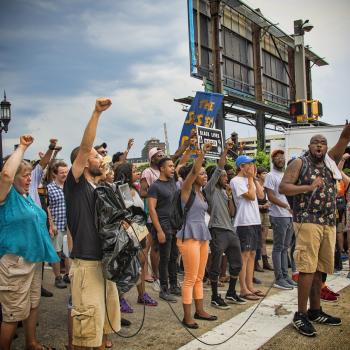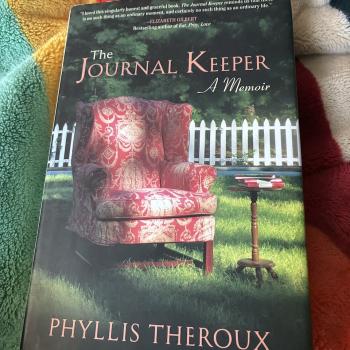
There’s a scene I write about in my book, when my father-in-law and I visited the Mississippi State Capital together. The building was pretty empty, so we strolled our way through various corridors; I stared at forgotten faces of history, while he shared with me the stories that run inside his blood.
Near the end of our time there, we stumbled upon the Senate House and into the adjacent shoe shine room. After I asked him why the Confederate flag still hung in that room (a flag, I am happy to add, flies no longer), I listened as he relished in one final point, spoken to me and the two porters who joined us:
“And this woman right here? I made clear to her since she married my son and had my grand babies, only one thing is true: according to Mississippi state law, she no longer a white woman. She a black woman now! A black woman, you hear?”
“Yes!”
“Yes!” The voices of the men who sat in the shoeshine chairs rose up in unison.
“She too is bound by the chains of discrimination and hate. She too is tied to the problem, and until we address the problem of black and white, not a whole lot’s gonna change. Not a whole lot’s gonna change!”
James Meredith finished his speech, hands swooping the air like a conductor’s, his declaration the final note of his symphony. Our time here was done. Silence filled the coffee and shoeshine room, the scribbling of my pen the only sound any of us could hear. Look up, I glanced around the room. There wasn’t a dry eye in the place” (148).
Although there were places in my book with lengthy elaboration, I didn’t add a footnote to that section. Part of me felt the weight of his words didn’t need any more explanation, but part of me also didn’t know what I was supposed to say in the moment (or even in the months and years afterwards).
You see, I understood unforeseen and unspoken laws of the South, but I also understood what it meant to stake claim to my own skin. I also understood, entirely because of the strong Black women in my life, the wrongness and the absurdity of me, a white woman, claiming to be Black.
So, I avoided the conversation if I could, when I could. I deferred to the power of my his words and to a reader’s interpretation.
Two months after my book released, I sat on a stage with my father-in-law and Jemar Tisby, an author, theologian and friend. When my father-in-law brought up the point, I eventually deferred to Jemar: what was I supposed to say in response? Like the scene in the book, I understood the weight of interracial marriage in the U.S., but I also understood the weight of claiming Black status as a white woman, particularly in the West.
I stumbled my way through an answer: I am and I am not. I passed it along to Jemar.
And that moment has stayed with me ever since.
But this last week, when I was reading Isabel Wilkerson’s newest book, Caste, I read the words I wish I would have spoken two years ago:
The Nazi researchers had come across a provision in some of the U.S. miscegenation laws that could help them define whether a person who was half-Jewish should count as a Jew or an Aryan. It turned out that Texas and North Carolina had an “association clause” in their marriage bans that helped those states decide if an ambiguous person was black or white, privileged or disfavored. Such a person would be counted in the disfavored group if they had been married to or had been known to associate with people in the disfavored group, thus defying caste purity (87).
Was it any different in Mississippi, when a Black man married a white woman, when the two had children together?
Part of me wishes I would have spoken those words two years ago, but for now, Wilkerson’s insights rattle around in my brain. For all of us, no matter the color of our skin or our racial identity, we continue in the fight – until that day when we no longer need to fight for equal access to the table.
We continue to raise our voices.
And we continue to raise our fists in solidarity, accountability and humility, as we journey along this road together.
—
There’s a lot to unpack here, so what’s rumbling around in your brain now? If you haven’t already, be sure to grab copies of Jemar Tisby’s books, The Color of Compromise and How to Fight Racism, as well as Isabel Wilkerson’s Caste and my own book, The Color of Life, if you haven’t already.
*Post contains Amazon Affiliate links












